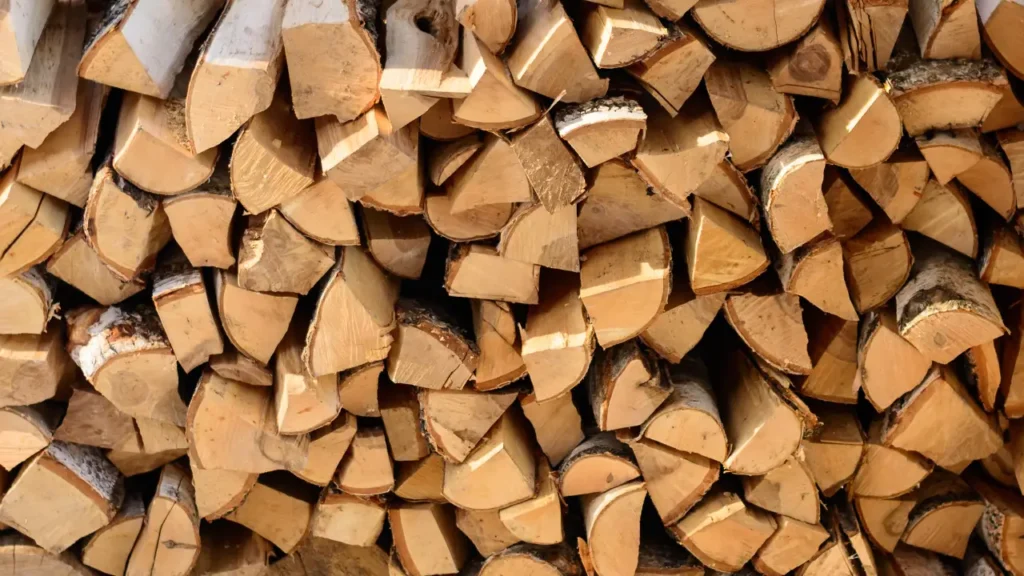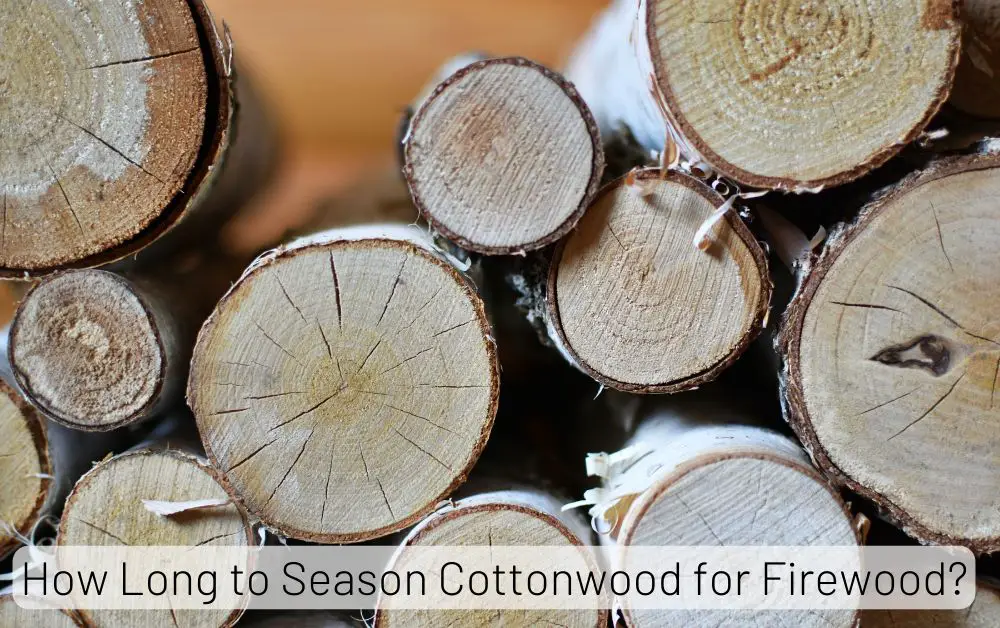Kiln dried wood has become the gold standard for those seeking high-performance wood for heating fireplaces, fire pits and wood stoves. Unlike air-dried wood, which takes months to naturally reduce its moisture, kiln drying uses advanced technology to create a stable, low-moisture wood product in a fraction of the time.
For anyone looking to make the most out of their firewood understanding the unique benefits and quality of kiln dried wood is essential.
This comprehensive guide dives deep into why kiln dried wood is considered superior, how it’s produced, and what to look for when buying it.
Kiln Dried Wood Overview
| Attribute | Kiln Dried Wood |
|---|---|
| Moisture Content | 6-20% |
| Drying Time | 3-7 days |
| Burn Efficiency | Higher heat output (around 30% more) |
| Smoke Production | Minimal, cleaner burn |
| Resistance to Pests | Highly resistant due to low moisture |
| Wood Stability | High (less warping/cracking) |
| Ideal Uses | Fireplaces, wood stoves, construction |
| Cost | Higher upfront cost |
| Weight | Lighter due to reduced moisture |
| Environmental Impact | Lower emissions, efficient resource use |
Key Takeaways
-
Kiln dried wood Burns cleaner and hotter, ideal for fireplaces and wood stoves.
-
Kiln drying takes days, ensuring stable, crack-free wood.
-
Resists warping, pests, and mold, perfect for long-term use.
-
Produces less smoke, reducing creosote buildup in chimneys.
-
Though pricier than seasoned wood, kiln dried wood offers lasting quality and performance.
What is Kiln Dried Wood?
Kiln dried wood refers to lumber that has been dried in a kiln to remove excess moisture, often reducing the wood’s moisture content to as low as 6-8%, depending on its intended use.
A kiln is a thermally insulated chamber that allows for a precise, controlled drying environment, expelling the natural moisture in wood more efficiently than traditional methods.
Kiln dried firewood creates a stable and durable wood that resists warping, shrinking, and cracking. By comparison, air-dried wood can take six months to a year to naturally dry and often retains more moisture.
In contrast, kiln drying reduces the drying time to a matter of days or weeks and delivers consistent results that air drying cannot match.
According to the U.S. Forest Service, kiln dried wood has a moisture content of 6-10%, whereas air-dried wood generally stabilizes at 12-18% moisture. Lower moisture levels contribute to better durability and combustion, especially valuable for applications like firewood.
Key Benefits of Kiln Dried Firewood
1. Reduced Moisture Content
Kiln drying effectively reduces the wood’s moisture content, which minimizes issues related to expansion, contraction, and decay.
Lower moisture also makes kiln dried firewood a better option for heating since it burns more efficiently and produces less smoke. For firewood, the reduced moisture content translates to cleaner, hotter burns that are ideal for home heating.
According to experts, kiln dried firewood contains 10-20% less moisture than seasoned wood, allowing for a more efficient burn and 30% less smoke production, reducing creosote buildup in chimneys.
| Type of Firewood | Moisture Content |
|---|---|
| Kiln-Dried | 6–8% |
| Air-Dried | 15–25% |
| Green (Freshly Cut) | 30-60% |
| Seasoned (1-2 years) | 20-30% |
| Well-Seasoned (2+ years) | 15-20% |
2. Faster and Easier Ignition
Due to its low moisture content, kiln-dried wood ignites much more easily than air-dried wood. This feature is particularly beneficial for quickly starting fires in fireplaces, wood stoves, or outdoor fire pits, especially during cold weather.
3. Cleaner Burning
Kiln-dried firewood burns cleaner than traditional wood, resulting in less smoke and reduced creosote buildup in chimneys. This cleaner combustion is not only better for indoor air quality but also minimizes the risk of chimney fires.
4. Longer Burning Times
The high energy density of kiln-dried firewood means it burns longer than its wetter counterparts. This characteristic allows users to enjoy sustained heat without the need for frequent log additions, making it ideal for extended use during cold spells.
5. Reduced Pests and Mold
The high temperatures used in the kiln drying process effectively eliminate pests, mold, and other contaminants that may be present in the wood. This makes kiln-dried firewood safer and cleaner to store indoors.
6. Convenient Storage
Kiln dried firewood is lighter and more compact due to its lower moisture content, making it easier to transport and store.
It can also be stored indoors without the same risks associated with air-dried wood, such as attracting pests or developing mold.
8. Environmental Benefits
Using kiln-dried firewood contributes to reduced air pollution due to its cleaner burning characteristics. Efficient combustion means less wood is needed to achieve the same amount of heat, promoting conservation of forest resources
What to Look for in Kiln Dried Firewood
-
Moisture Content: Aim for 10-20% moisture (ideally 14-18%).
-
Consistency in Size: Look for uniform logs, typically around 16 inches long.
-
Cleanliness: Ensure wood is free from dirt, mold, and pests.
-
Sound Test: Knock logs together; a sharp sound indicates dryness.
-
Weight: Choose lighter logs, which suggest lower moisture content.
-
Source and Certification: Buy from reputable suppliers with quality certifications.
-
Packaging and Storage: Check that wood is stored dry and protected from moisture.

Kiln Drying Process Explained
The kiln drying process involves placing wood into a kiln, where temperature, humidity, and airflow are carefully controlled. During the process, the heat within the kiln evaporates the moisture from the wood, while fans circulate the air to maintain even drying.
Stage 1: Warming Phase: The kiln slowly heats up to prepare the wood for moisture extraction. This gradual heating ensures that the wood dries evenly without causing cracks or warping.
Stage 2: Drying Phase: During this stage, the kiln reaches higher temperatures, and the moisture from within the wood begins to evaporate. The use of fans helps distribute hot, dry air, ensuring consistent moisture removal.
Stage 3: Equalizing Phase: As the drying nears completion, the kiln stabilizes the wood’s moisture content across each piece, ensuring even dryness.
Stage 4: Conditioning Phase: This stage “sets” the wood’s final moisture level, relieving any internal stresses in the wood. This stage is critical for ensuring stability, particularly for wood that will be used in construction or furniture-making.
Kiln Dried Wood vs. Seasoned Firewood
| Feature | Kiln Dried Wood | Seasoned Firewood |
|---|---|---|
| Drying Time | 3-6 days in a kiln | 6-12 months through air drying |
| Moisture Content | 10-20% | 15-30% |
| Heating Efficiency | High (burns hotter and cleaner) | Moderate |
| Storage Requirements | Less risk of pests, mold | Prone to pest and mold issues |
| Cost | Generally higher | Lower |
| Smoke Production | Minimal, cleaner burn | Higher smoke, more creosote |
| Resistance to Pests | High (less warping/cracking) | Lower (more prone to warping) |
| Weight | Lower emissions, efficient resource use | Higher emissions |
Kiln dried wood provides superior heating efficiency due to its lower moisture content, while seasoned firewood, though more affordable, can vary in quality depending on the conditions during its drying period.
Popular Uses of Kiln Dried Wood
Heating and Fireplaces
firewood kiln dried is ideal for home heating since it burns at a higher temperature and produces less smoke, making it environmentally friendly and efficient.
Many homeowners prefer it for wood stoves and fireplaces because it is easier to store and requires less maintenance than seasoned wood.
Woodworking and Construction
For woodworkers, kiln dried lumber offers a stable, durable material that resists warping and shrinkage, critical for furniture-making, cabinetry, and flooring.
In construction, kiln dried wood is often used for framing and structural elements due to its dimensional stability and resistance to decay.
Outdoor Projects
Dried kiln wood is also an excellent choice for outdoor projects, such as decks, fences, and garden furniture, as it’s less prone to moisture-related damage and can handle temperature fluctuations.
Is Kiln Dried Wood Better? Pros and Cons
| Pros | Cons |
|---|---|
| Low moisture content | Higher cost compared to seasoned wood |
| Quick ignition and efficient burn | Limited availability in some regions |
| Long-lasting and durable | |
| Pest and mold resistant |
FAQs
What is kiln dried wood used for?
Kiln dried wood is primarily used for heating, woodworking, construction, and outdoor projects due to its stability and durability.
Is kiln dried wood environmentally friendly?
Yes, kiln dried wood’s lower moisture content results in a cleaner burn, which produces less smoke and particulate emissions.
Can kiln dried wood be used outdoors?
Yes, it’s suitable for outdoor applications, though it may still require treatment for prolonged exposure to elements.
How long does kiln dried wood last?
With proper storage, kiln dried wood can last for years without significant deterioration.
What is the difference between kiln dried and seasoned wood?
Kiln dried wood is dried in a controlled kiln to reduce moisture quickly and evenly, while seasoned wood is air-dried over time, often retaining higher moisture levels.
Affiliate Disclosure: Fireplaceadviser.com is a participant in the Amazon Services LLC Associates Program. We may earn a commission when you click on certain links on this site and purchase.

Hello!! I am Jamal Khan. I often fix my home electric heaters and gas stove problems and research the common issues in the heating units to improve my knowledge and expertise. The aim of establishing fireplaceadviser.com is to share my expertise and knowledge with my audience.


















